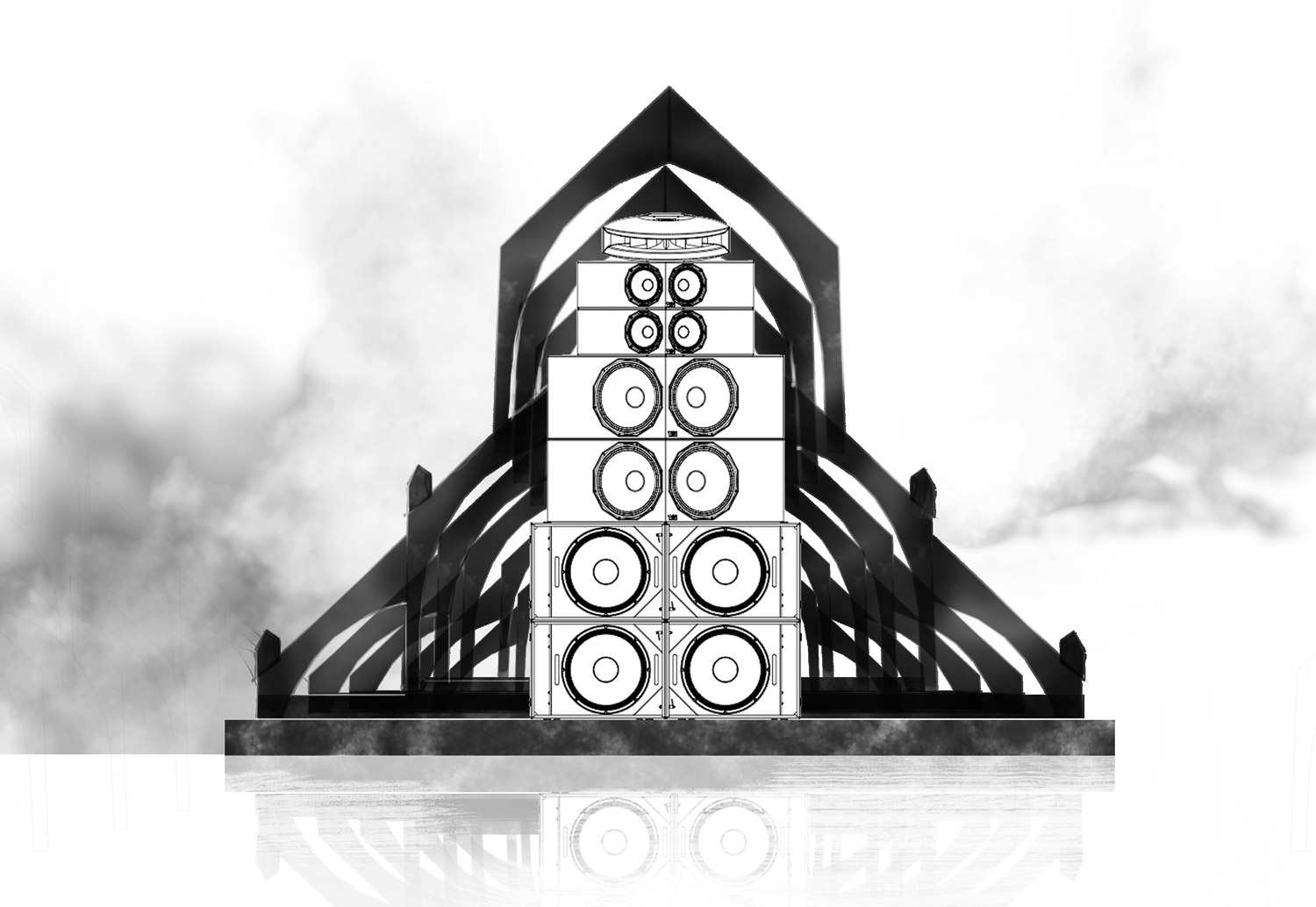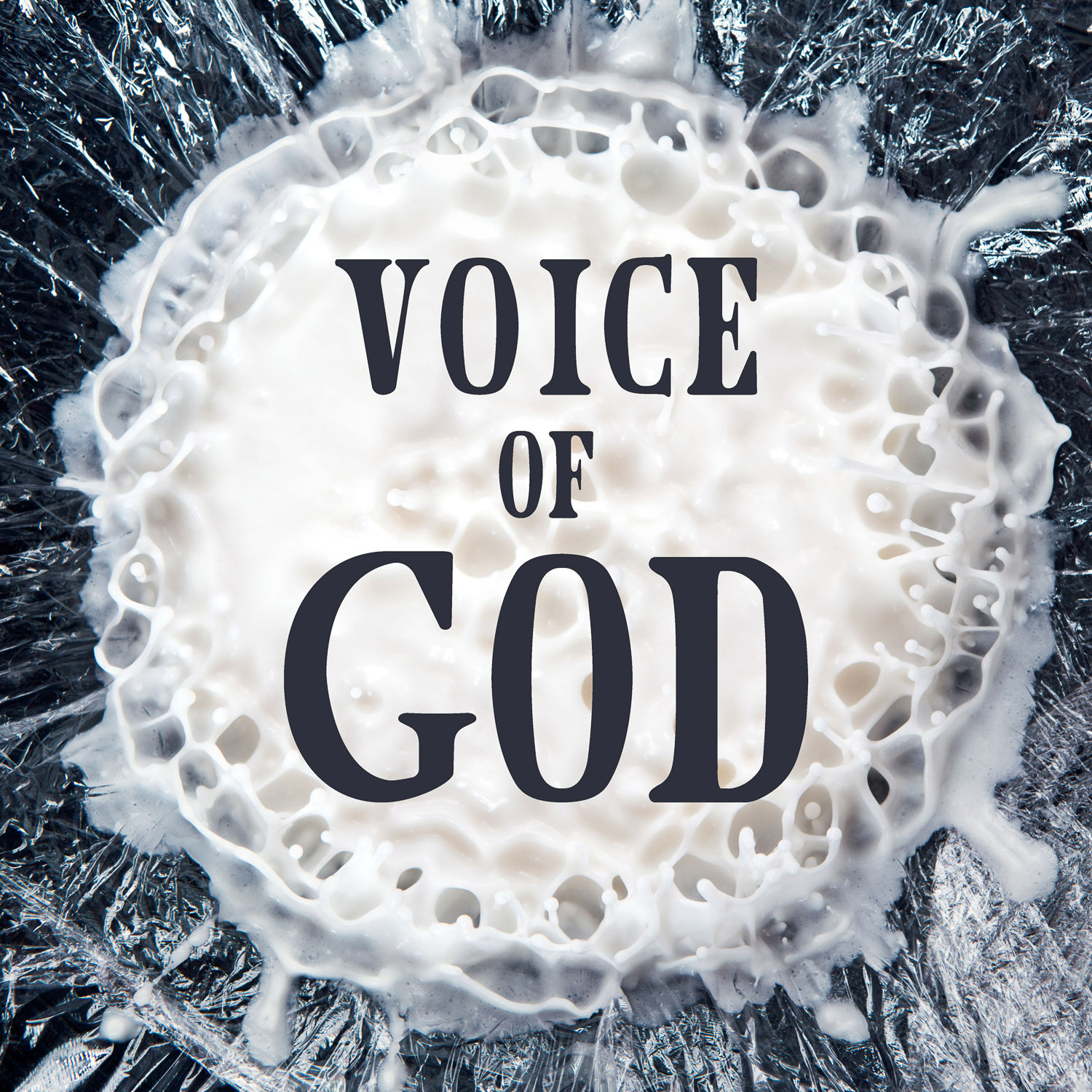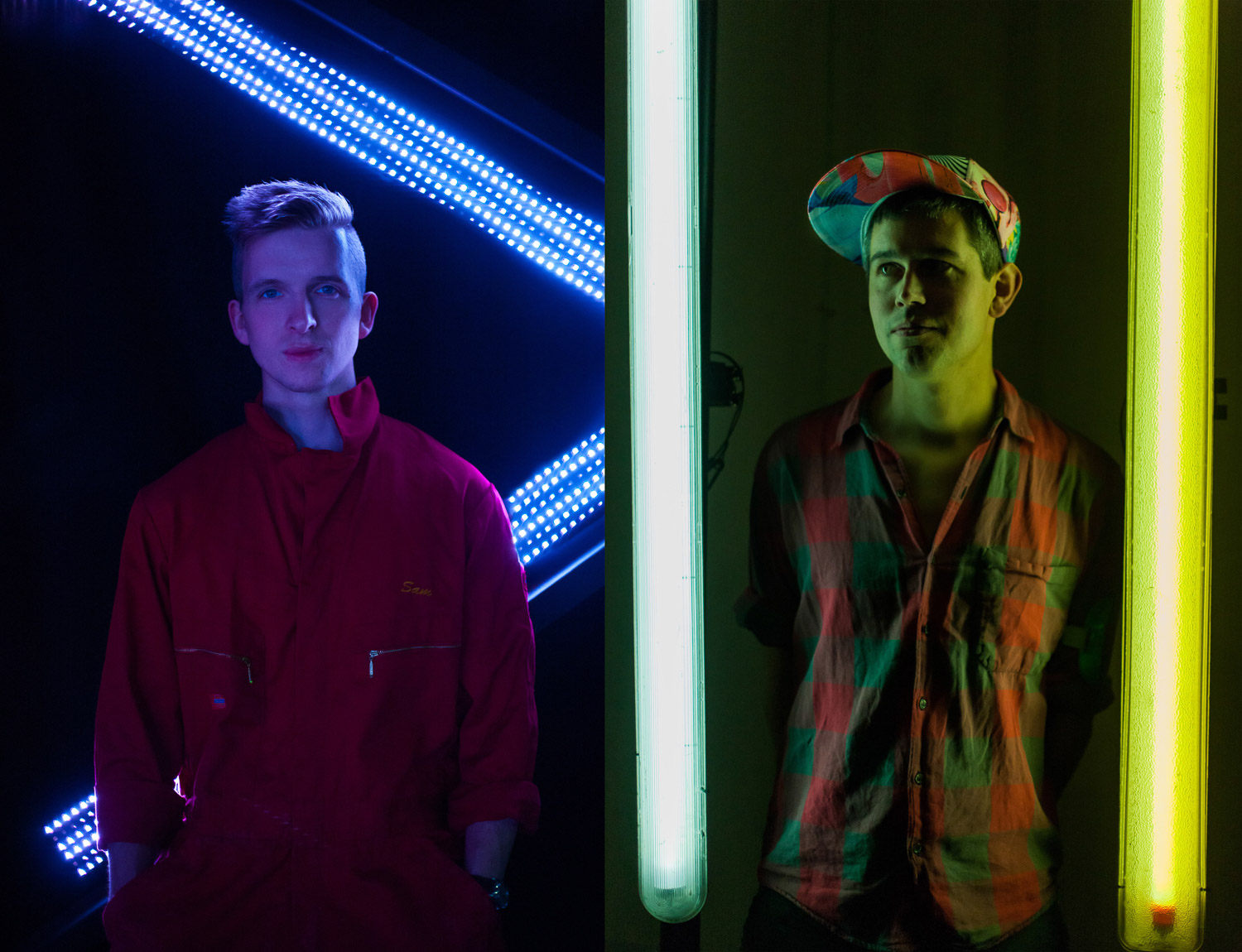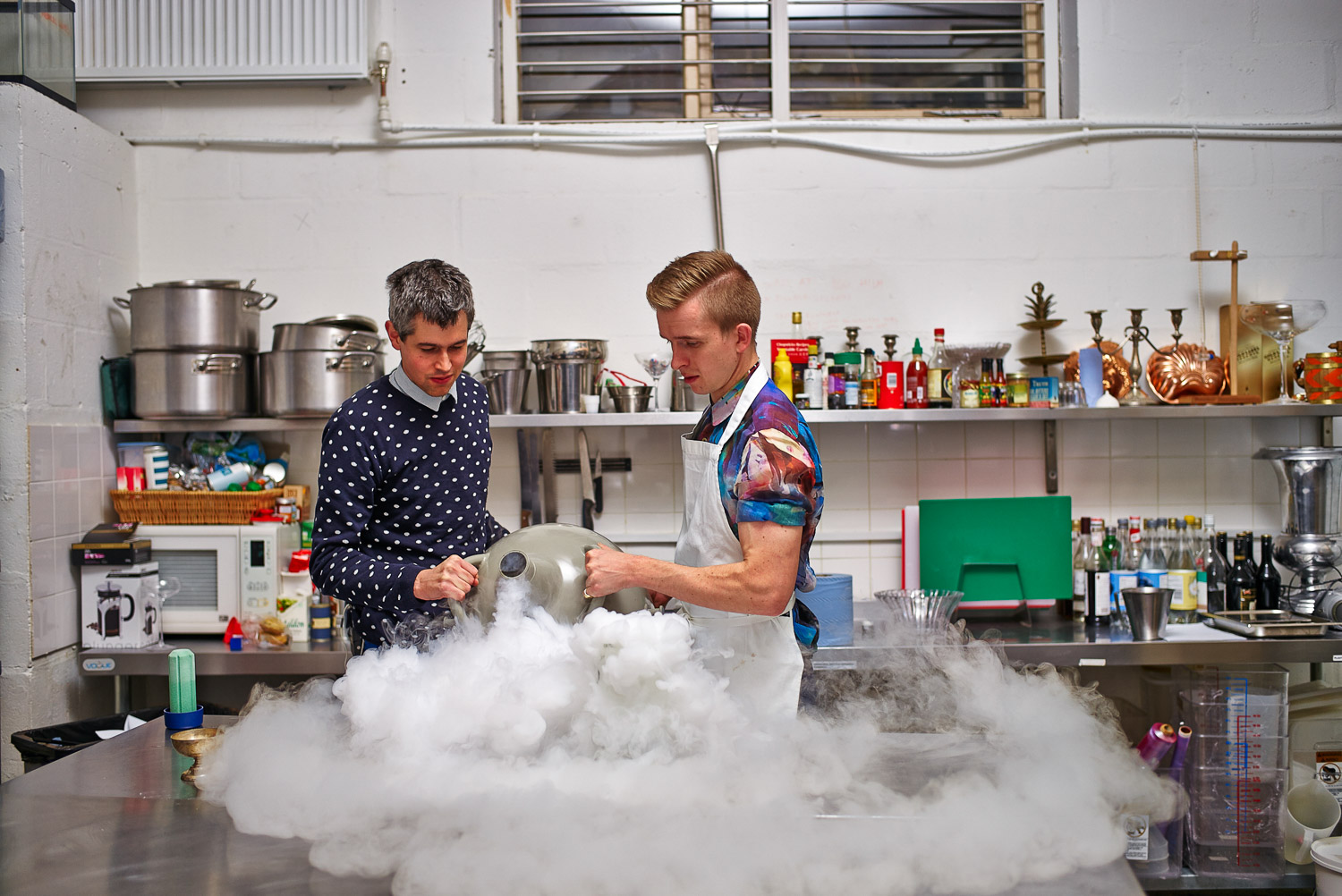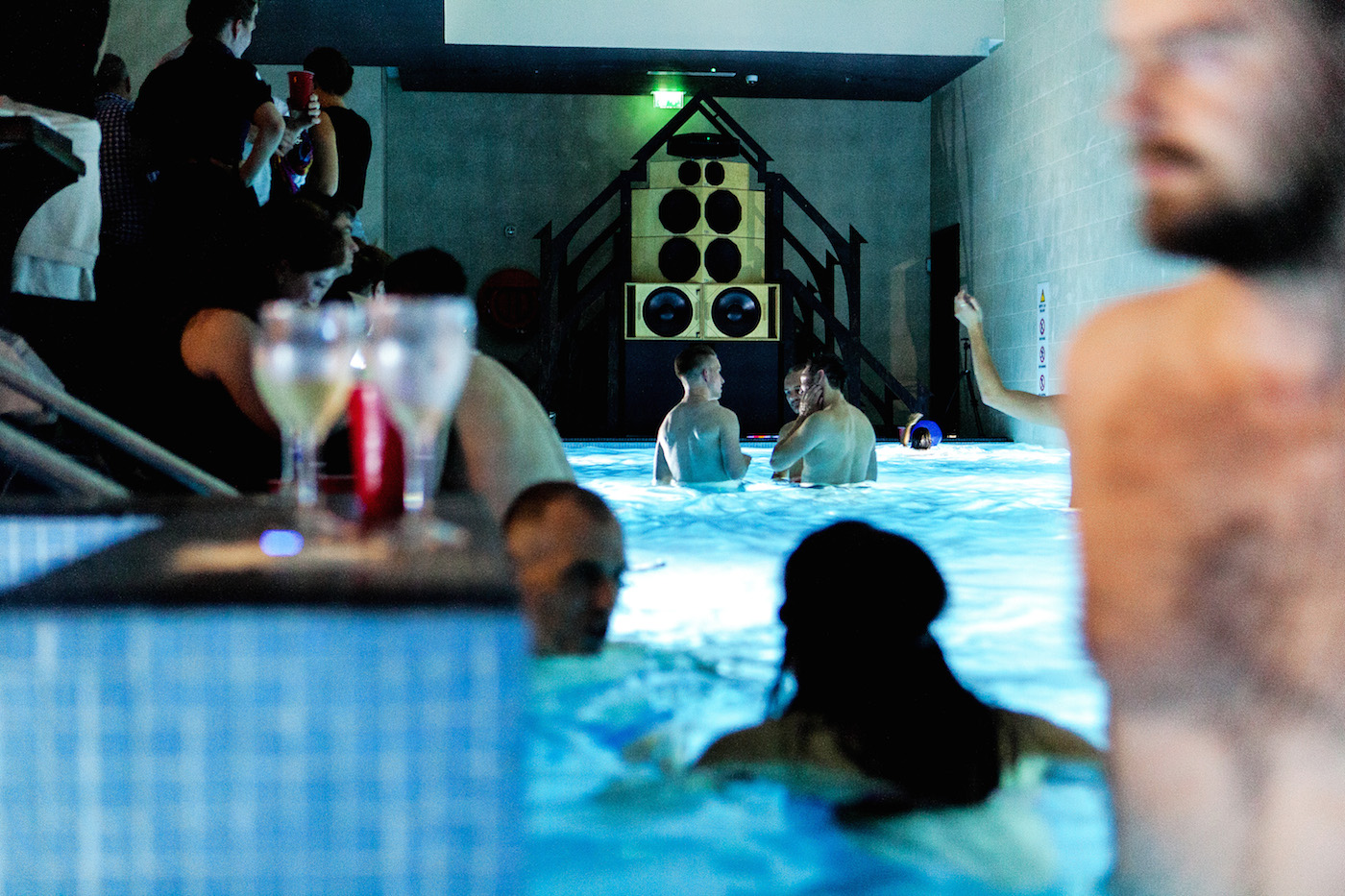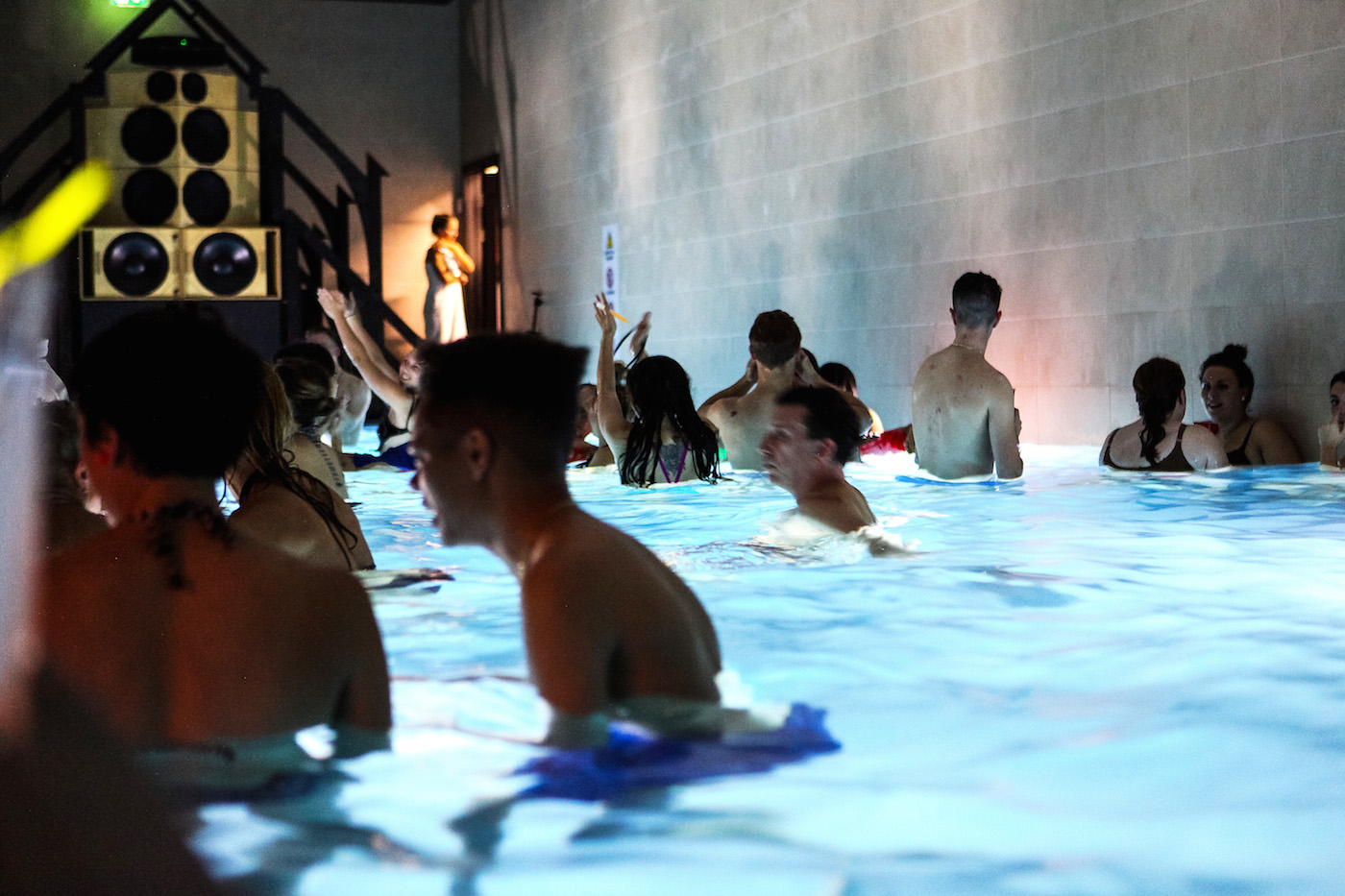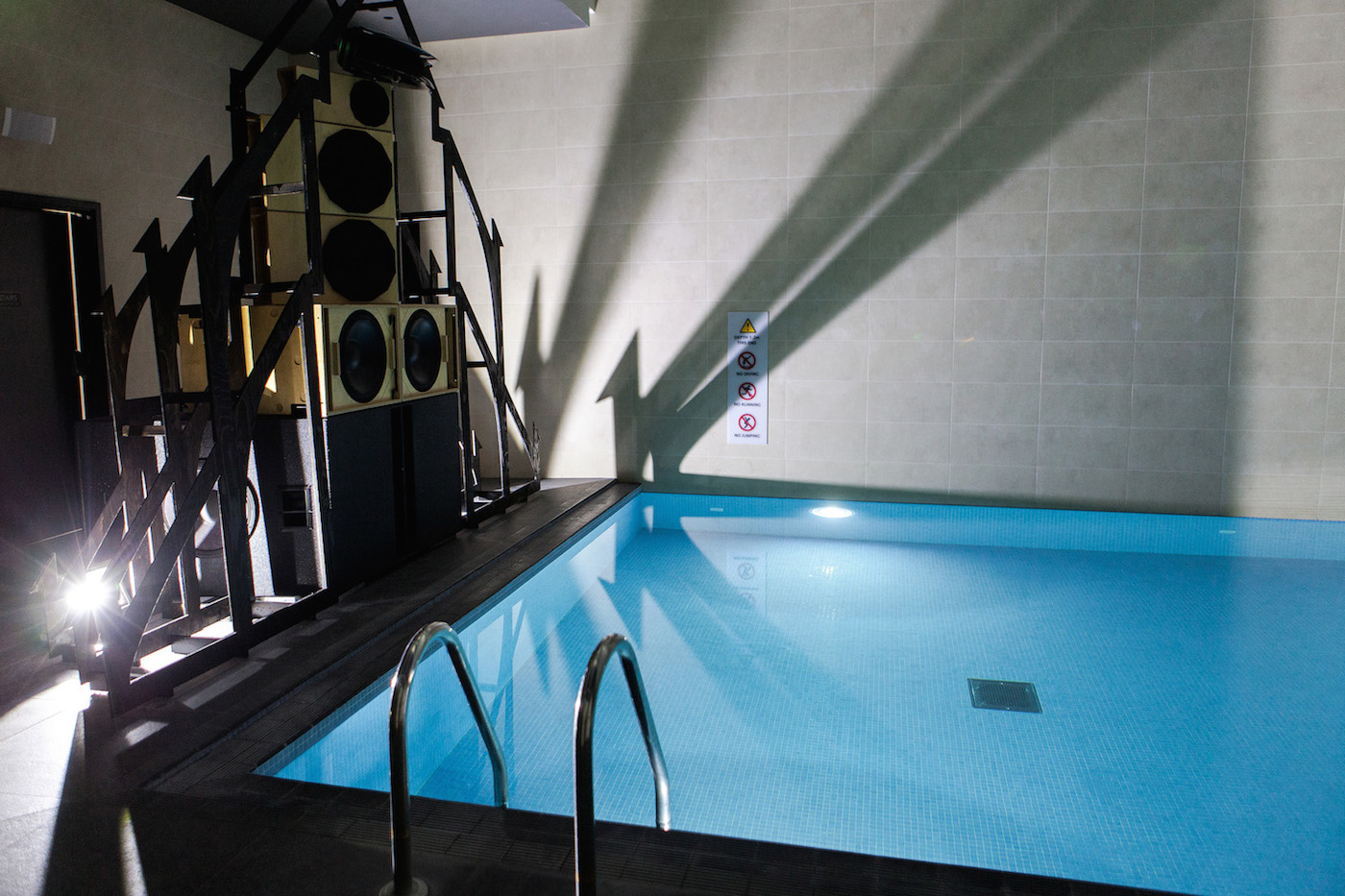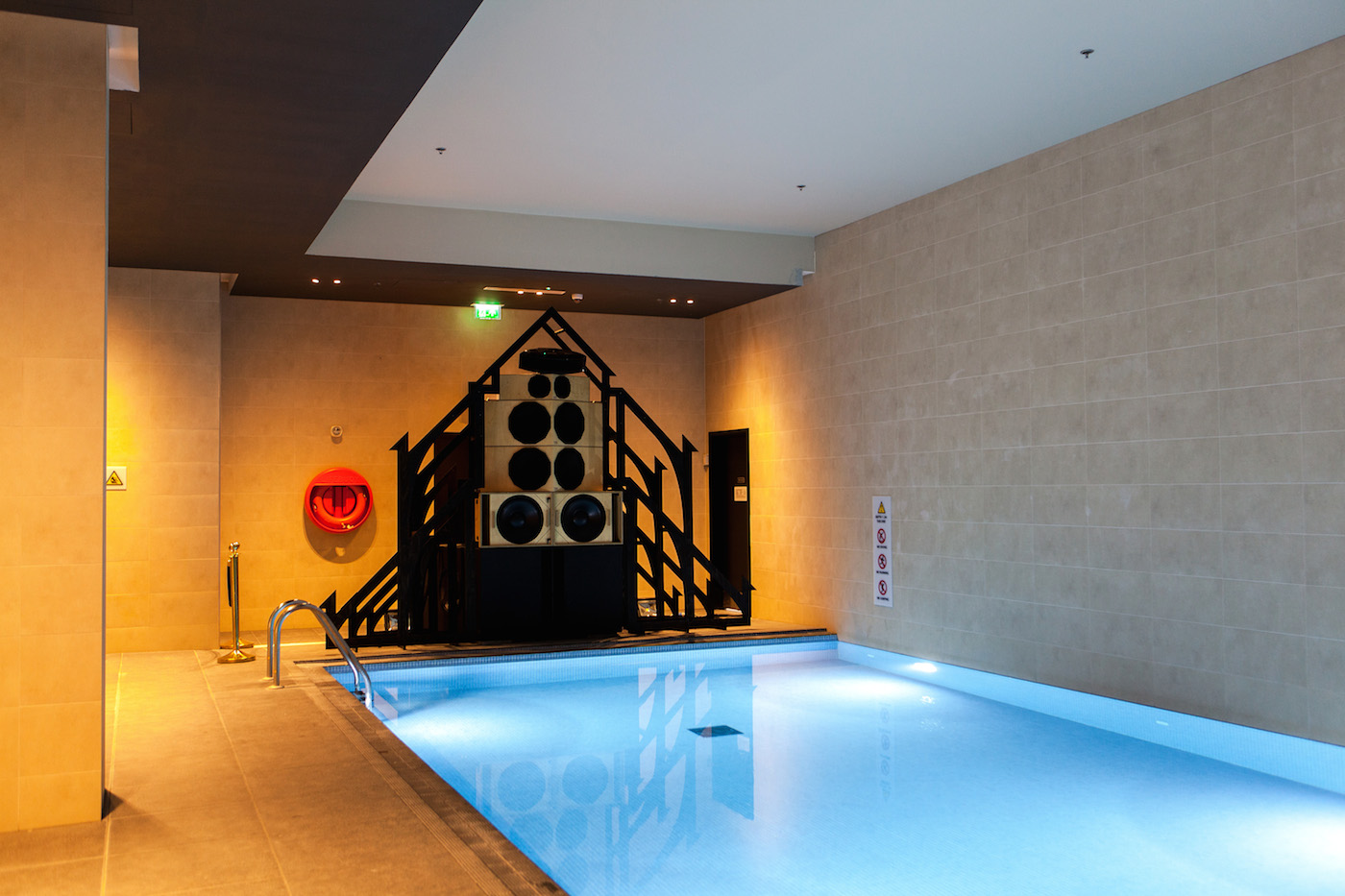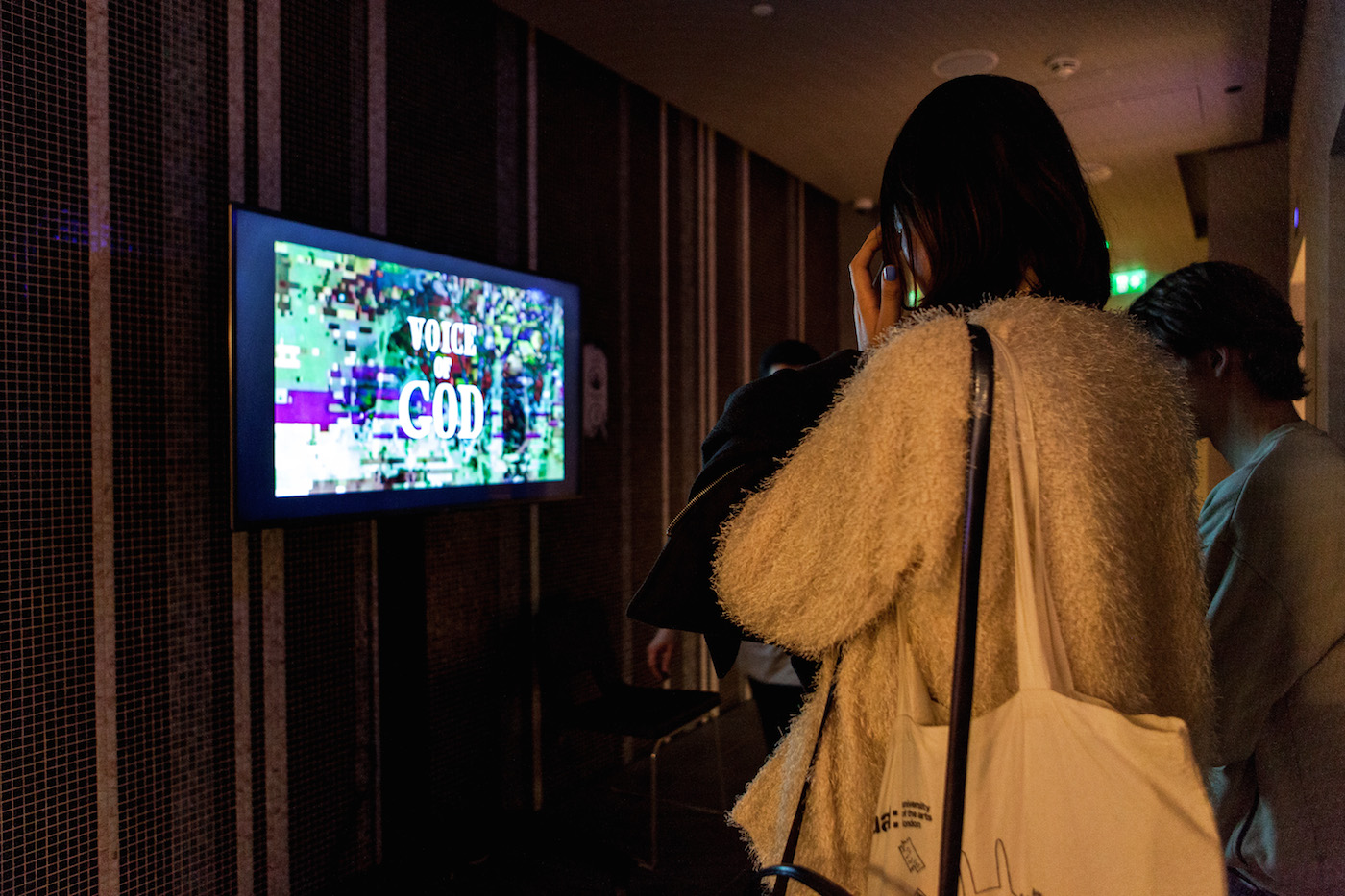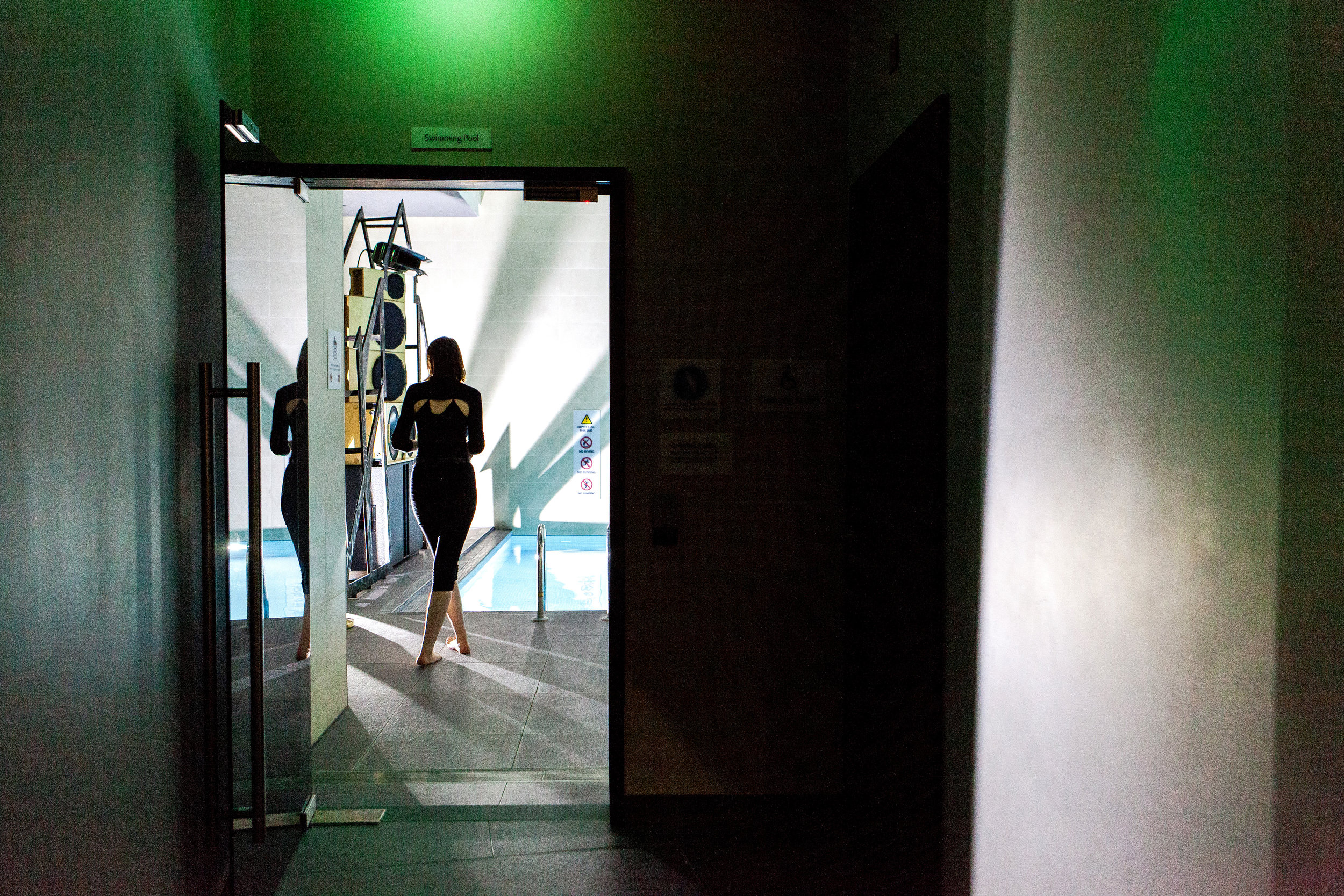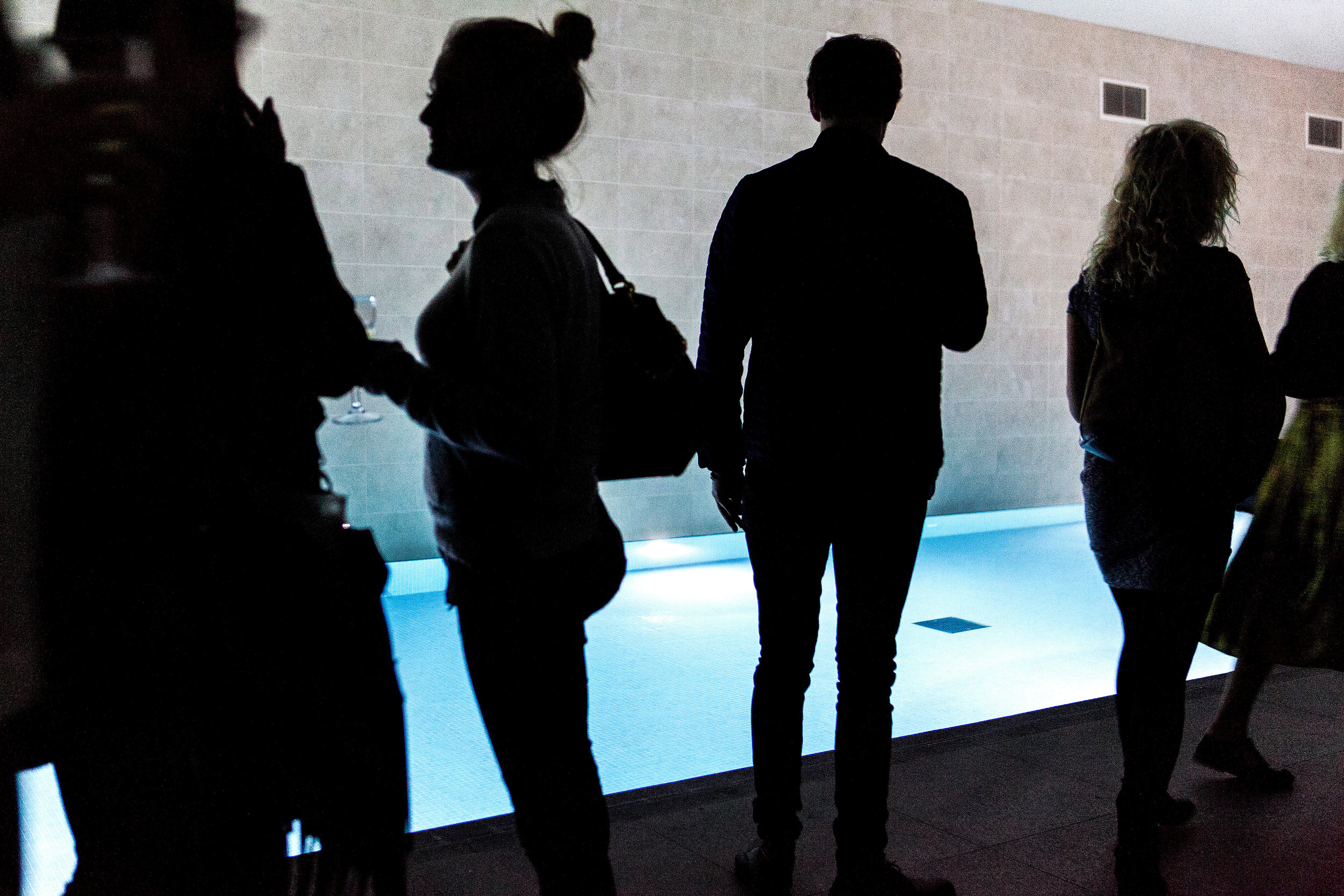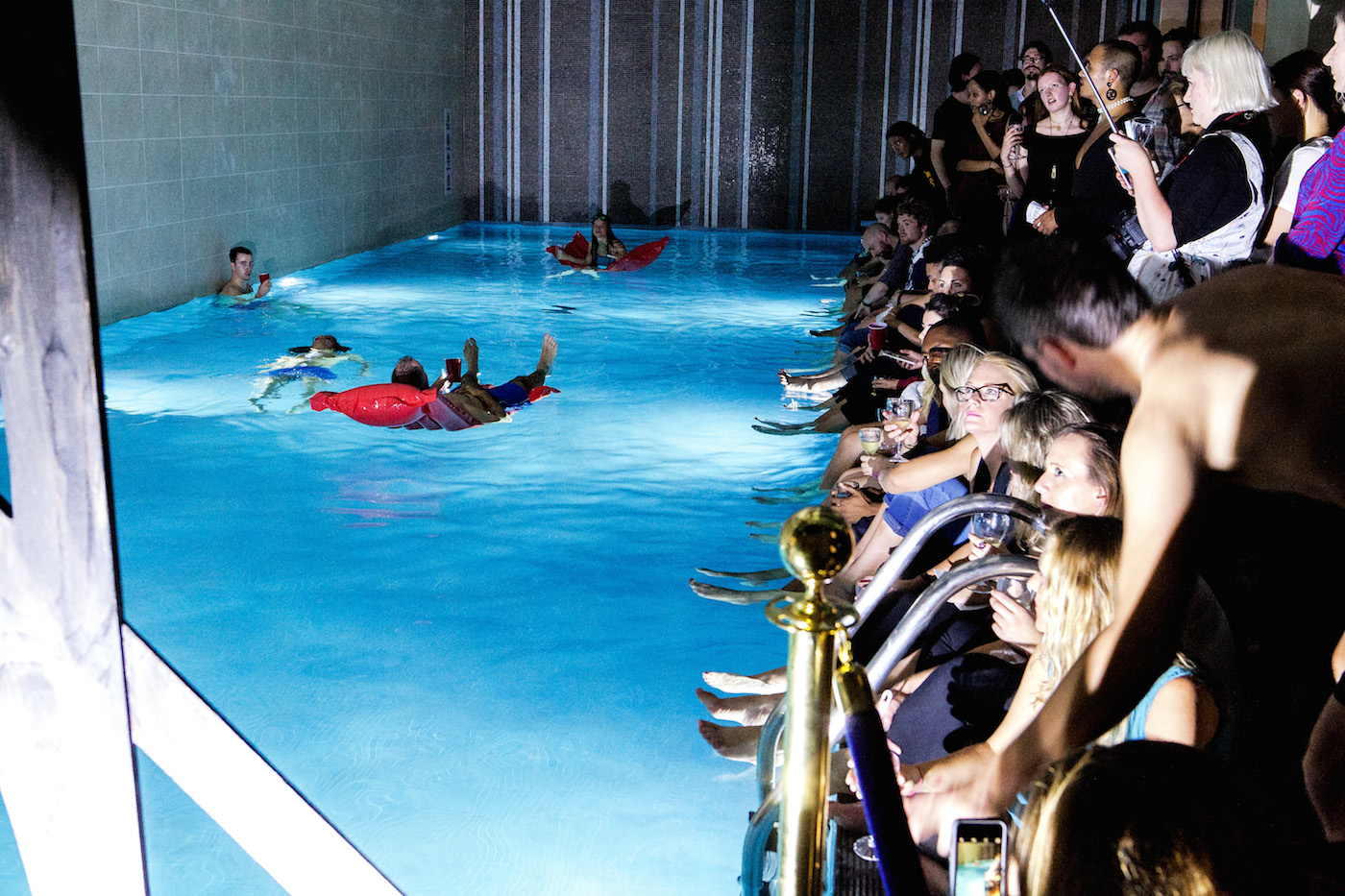Title: Voice of God
Artist: Bompas & Parr
Dates: Thursday 29 September - Sunday 2 October 2016
Times: Thursday 12pm – 5pm,
Friday 4.30pm – 7.30pm,
Saturday and Sunday - Midday – 5pm
Location: Hilton London Bankside, 2-8 Great Suffolk Street, SE1 0UG
FREE
Experience Bompas & Parr’s supernatural voice installation at this year’s MERGE. The creative duo have conceived an art installation which transposes voices to infrasound to give visitors supernatural experiences at Hilton London Bankside’s swimming pool.
‘Voice of God’ is a world first; the only time that infrasound has been creatively used to give people a spectral visitation. The physical installation poses questions about consciousness, our perception of the physical world and our understanding of the supernatural.
Bompas & Parr has worked with acoustic scientists to design and build the sound-based installation that appears to connect you with the supernatural. A custom sound system created by TPI Sound will broadcast infrasound at 19 Hz. This frequency is below the regular hearing threshold of a human but is the resonant frequency of the human eyeball. These low-frequency vibrations can cause the eyeball to distort activating the rods and cones in your eyes through pressure rather than light.
The soundscape itself is being created by composer and sound designer Dom James. Guests are invited to use their own voice to trigger seemingly supernatural and divine visions through the medium of sound.
People are invited to create a message and submit their entry. All you need to use is the mic feature on a phone and to record 10 - 30 words in a quiet place. Send the sound file to VoG@bompasandparr.com by 15 September 2016.
About the artists:
Bompas & Parr
Bompas & Parr leads in experience design, immersive research, architectural installations and contemporary food design.
From 2007, when Bompas & Parr was founded as a craft jellymonger, the studio has rapidly grown from just Sam Bompas and Harry Parr to its current complement of sixteen - a team of creative specialists, designers, architects, cooks, technicians and administrators who work across a wide range of projects.
The team works to experiment, develop, produce and install projects, artworks, jellies and exhibitions, as well as archiving, communicating and contextualising the work. Additional to the projects realised in-house, Bompas & Parr contracts structural engineers and other specialists, and collaborates with curators, cultural practitioners and scientists.
The studio works with some of the world’s biggest companies (Diageo, Cargill, Mercedes-Benz) and the world’s foremost cultural institutions (San Francisco Museum of Modern Art; Royal Botanic Gardens, Kew; Garage Centre for Contemporary Culture, Moscow).
@bompasandparr
About TPI Sound
TPI's experienced team of engineers, Giles Smith, Ian Knight and industry pioneer Tim Isaac, have designed systems for the world’s leading record companies, studios and entertainment venues over decades.
Designed and manufactured in United Kingdom, TPI work exclusively with state of the art materials supplied by highly experienced industrial experts.
TPI's collaboration with Bompas & Parr is an exciting project looking to explore and challenge the boundaries of how we can experience sound.'
The science behind ‘Voice of God’
Infrasound refers to extreme bass waves or vibrations, those with a frequency below the audibility range of the human ear (below 20Hz). Even though these waves can't be heard by us, they can be felt, producing a range of effects in some people including adrenaline rushes, extreme emotion and chills. Infrasound is often used in the scores of thriller, action and horror films to ramp up audience tension.
Psychologist Richard Wiseman of the University of Hertfordshire thinks that the odd sensations that people attribute to religious and supernatural experiences may be caused by infrasonic vibrations.
In 1998, Vic Tandy an experimental officer and part-time lecturer in the school of international studies and law at Coventry University was working late. The lab he was in was said to be haunted. Tandy became anxious and saw a grey blob wander across his field of vision. When he turned to face the blob it disappeared. The next night in the same lab Tandy was working on his fencing foil with the handle locked in a vice. With nothing touching it the blade started to vibrate vigorously.
Tandy being a scientist, sought a rational explanation for these events. He tracked down a newly installed extractor fan in the lab throwing our infra-sound at 18.98 Hz, close to the resonant frequency of the eye. Tandy conjectured that the ghostly figure he had seen was an optical illusion caused by his eyeball vibrating. Further investigation showed that the dimension of the room may also have come into play to heighten the effect – it was exactly have a wavelength in length, with the desk dead centre. So a standing wave may have caused the vibration of the foil.
So why is infrasound said to generate such profound experiences verging on the supernatural? One explanation is that in the natural world, only large-scale natural disasters –earthquakes, volcanic eruptions and landslides generate infrasound. And as infrasound has such a long wavelength it carries further and is distorted less than sounds in the audible spectrum.
The eruption of the Indonesian volcanic island Krakatoa, in 1883 was the most powerful sound ever experienced by humans. As on eyewitness Captain Sampson of the British vessel Norham Castle, which was a few tens of kilometers from the volcano with his crew, wrote:
“I am writing this in pitch darkness. We are under a continual rain of pumice-stones and dust. So violent are the explosions that the eardrums of over half my crew have been shattered. My last thoughts are with my dear wife. I am convinced that the Day of Judgment has come.”X
There has only been one major form of instrument capable of generating infrasound throughout human history - the organ. With organs often located in cathedrals, churches and palaces, buildings notable for their architectural acoustic profiles (typically 3 second reverbs for a cathedral), Professor Richard Wiseman suggests that infrasound may be a contributing factor to the religious experiences and supernatural experiences.

